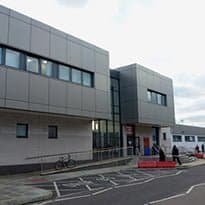Basildon and Thurrock University Hospitals NHS Foundation Trust has completed a phased rollout of a £7 million electronic medical record system.
The trust launched the project in 2011, estimating that it would save £1.6 million a year.
The EMR system provides clinicians with access to a patient’s historic records and displays real-time information from the patient administration system and a number of others, including pathology and radiology.
Over 450,000 patient case notes have now been scanned into the system, totalling around 54 million pages.
Phil Burke, the trust’s EMR programme manager, told EHI the trust had “very demanding and detailed specifications” for the system when it went out for procurement.
The system was designed by Fortrus which is providing ongoing support, while scanning equipment from Kodak and IBML has been used to digitise paper notes.
Ian Linehan, a retired consultant colorectal surgeon and the chairman of a clinical advisory group that helped to configure the system, told EHI the group had come up with a list of 40 key document types for clinicians to easily access within the record.
“We want to know what happened to the patient, what procedures they’ve had and what drugs they’re on. The fact that they had a normal temperature on the seventh day of almost three months ago may be relevant if you’re putting together a report, but it’s not crucial to most users.”
The EMR is split into chapters such as correspondence, nursing, and observations, with documents attached to specific patient events that clinicians can view on a timeline.
Linehan said the system is also integrated with the trust’s results reporting system, allowing clinicians to access results from within a patient’s record.
Burke said the EMR project allowed the trust closed its medical records warehouse in June last year after digitising the majority of its case notes.
Pushpakaran Munuswamy, the trust’s chief clinical information officer, said the EMR system has made it easier to access information while ensuring that more than one person can access a patient’s record at the same time.
“This is a huge change to the way we are all used to working, but we can all see the benefits.”
Burke said the trust chose to go with a phased rollout rather than a “big bang” approach so it could take time to make changes to the system.
“When we first went live, we were able to focus on one particular clinic, understand how clinicians used the solution and make any necessary adjustments.”
While the trust is still using some paper forms which are then scanned into the electronic records, Linehan said it is developing plans to enable direct input into the EMR.
Clinic letters are automatically added to the EMR, while it is piloting cancer referral forms with clinical commissioning groups for completely electronic referrals, he said.
The trust is also developing smart indexing to automatically identify key documents as they are scanned and pull them into the record.

